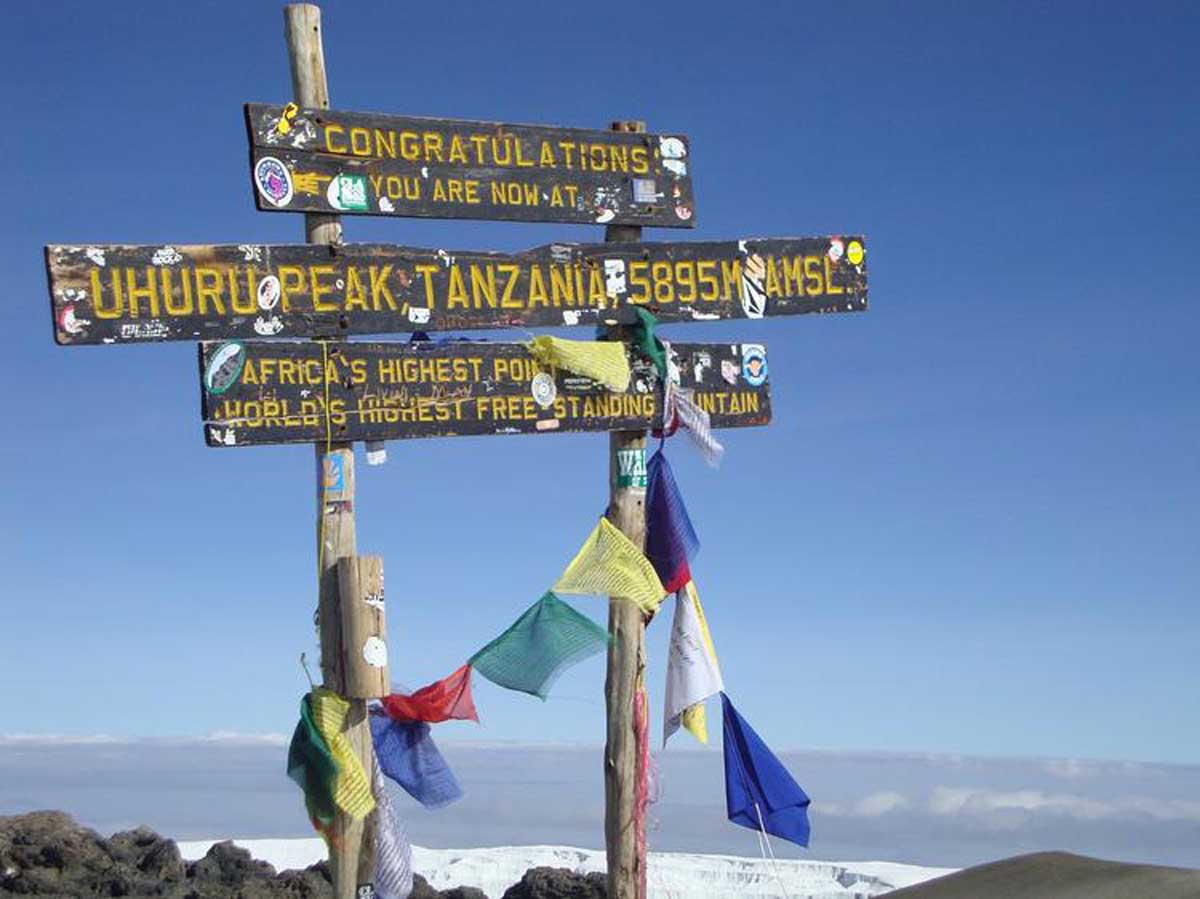Mount Kilimanjaro, located in Tanzania, is unlike any other. This is the highest mountain in Africa, a member of the elite seven summit club, or “Club of 7 Summits”. It is considered the highest free-standing mountain in the world.
Because of its incredible biodiversity, climbing Mount Kilimanjaro attracts many climbers and hikers from all over the world every year.
Climbers usually spend about seven days on the dormant volcano, crossing various climatic zones: from tropical forests in the foothills through moorlands and arid alpine deserts to the Arctic closer to the top. By the way, the peak of this inactive volcano – Uhuru – rises to a height of 5,895 meters and is its highest point. It is no coincidence that it is called the “roof of Africa”. This seven-day journey begins at approximately 1,800 meters. Due to the steep climb that is overcome in such a short amount of time, climbers must be in the excellent physical condition and have previous high-altitude hiking experience.
Here are some important tips and information about Mount Kilimanjaro from the experts. They may be needed in preparation for climbing Mount Kilimanjaro.
Time required to climb Kilimanjaro
It is impossible to take an unlimited number of vacation days, but it is also unrealistic to plan to have time to conquer Mount Kilimanjaro, that is, to go up and down in a week of vacation. Technically this is probably doable, but we don’t recommend it if you intend to reach Uhuru Peak. Life is so short and climbing Kilimanjaro can be the ultimate adventure of a lifetime.
It is better to plan to spend 7-8 days on Kilimanjaro for a safe, comfortable, and successful hike. Shorter ascents are associated with the risk of poor acclimatization and, as a result, inevitable evacuation.
Total: together with the time required to arrive in Tanzania and recover from the change of time zones, this adventure will have to take from nine to eleven days.
Various routes to climb Kilimanjaro
Trekkers on the Marangu route who attempt to do so in 5 days may become seriously ill midway through and are likely to stop. Despite the relative comfort of living in houses, in this case, it will not be possible to fully adapt to the height. You should not take the fastest route up if you want to ensure adequate accommodation and reduce the risk of oxygen deprivation and altitude sickness.
Choose the slowest option. Don’t look at the price when comparing a 6-day tour with a 7-day Machame itinerary. Estimate the time right away. Seven days always outweigh six. If you neglect these instructions, you may suddenly start to feel sick and suffer from a severe headache right on the second or third night, which will spoil the whole experience.
The 7- and 8-day Lemosho route options are a great alternative to acclimatize before climbing Kilimanjaro.
Best time of year to climb Kilimanjaro
There are several options for when is the best time to climb Kilimanjaro. There are no set hours for climbing, so you can start at any time of the year. There are peak and low seasons. So, most tourists prefer to travel to the peaks of Kibo, Mawenzi, and Shira from January to March and from June to October – the weather is dry and the probability of rain is the lowest.
June to October can be a bit cooler and there will be many more people. This is because most tourists from Northern Europe and North America come here in the summer – for the summer holidays.
Cost of climbing Kilimanjaro
Climbing Kilimanjaro is not cheap. But, on the other hand, of the seven summits, that is, world peaks, Kilimanjaro is one of the least expensive. For example, climbing Everest will cost about $70,000.
The cost of climbing Mount Kilimanjaro, fortunately, is not that high. When planning your ascent, there are several factors to consider, such as accommodation before and after the hike, desired level of comfort, transportation, and more. If your budget allows, add luxury. But with overly cheap trips, you need to be careful, as they may have poorly trained guides and underpaid porters. By avoiding these budget tours, you can help stop porter abuse.
Experienced Kilimanjaro Climbing Advice
There were climbers before you, and there will be even more of them. Someone motivated you to climb Kilimanjaro, and now you will motivate others to do the same.
The best advice for reaching the summit of Kilimanjaro is to take your time. Even though the ascent requires effort, it is achievable. Book with a reliable operator, drink plenty of water, hike moderately, and follow your guides’ instructions. With these tips, you will successfully reach the top.

